When things go wrong in the field—when there’s no hospital nearby, no ambulance on the way, and no sterile equipment to lean on—you’re left with your instincts, your prep, and your grit. What separates those who survive from those who don’t isn’t always luck—it’s knowledge.
Disclaimer: This article is for informational purposes only and is not a substitute for professional medical training. Always seek out certified first-aid and trauma response courses if you want to be truly prepared.
Here’s what combat medics know that most folks don’t, and why this wisdom could mean the difference between life and death in a post-collapse world.
Stopping Arterial Bleeding Without a Tourniquet
Arterial bleeding is fast and deadly. The bright red blood spurts with every heartbeat, and if you don’t act quickly, you’re watching someone bleed out in minutes. While a commercial tourniquet like the CAT is ideal, most of us won’t have that luxury in a grid-down situation.
Use a strong strip of cloth, a belt, backpack strap, or even a bra strap in an emergency. Tie it a few inches above the wound—never on a joint—and crank it down tight. If you can’t stop the bleed with that, shove clean cloth, gauze, or even a tampon (as a last resort) deep into the wound and apply firm, direct pressure.
This is called wound packing, and it saves lives. If available, use a hemostatic agent like Celox or QuikClot.
Reassess every few minutes. If the bleeding resumes, tighten again. Mark the time the tourniquet was applied. And remember, it’s better to have a limb amputated than to bleed out.
The Six-Hour Golden Rule of Wound Care
Clean wounds within the first six hours. After that, bacteria starts breeding, and infection becomes likely.
Wash the area with boiled and cooled water or purified water. Pure water is extremely, extremely important not only for regular drinking, but also for disinfecting wounds.
Any contamination in your water can make even a minor wound much worse. And you know what? Most of the “filters” these days are a double-edged sword anyways.
Forget fancy filters or expensive rain catchers. If you want access to a huge amount of clean water, get what the military uses. This military-grade water generator makes clean drinking water out of thin air—even in desert heat.
 This solution has been tested in the world’s harshest warzones both for hydration and for medical purposes… and now, you can have it in your backyard. It doesn’t need a well, plumbing, or municipal power.
This solution has been tested in the world’s harshest warzones both for hydration and for medical purposes… and now, you can have it in your backyard. It doesn’t need a well, plumbing, or municipal power.
Just air, and a little sun. No wonder preppers are calling it “the infinite water bottle.” Check it out and see how you can get it at a very special price right here!
Back to would care, if you have antiseptics like iodine or betadine, use them. Scrub out any dirt or debris using sterilized tools—yes, it’s painful, but it’s better than sepsis.
If the wound edges are clean and bleeding has stopped, you can close it with sutures, strips, or glue.
But never close a dirty wound—you’ll trap bacteria inside. For ragged or contaminated wounds, leave them open and clean them daily until they show signs of healing.
Why You Shouldn’t Remove Embedded Objects
It’s tempting to pull out a shard of metal, a bullet, or a piece of glass—but don’t. That object could be plugging a damaged artery. Remove it, and your patient could bleed out before you can stop it.
Stabilize the object using gauze, tape, or cloth. Build padding around it if needed, then wrap it snugly to prevent movement. Focus on controlling external bleeding and preventing further damage. Transport the injured as carefully as possible.
When to Let Someone Go
Triage is brutal, but it’s necessary. In a crisis with limited supplies, you have to decide who lives and who doesn’t. Someone who’s pulseless, not breathing, and has suffered major trauma may be beyond help. If you spend your time trying to resuscitate them, others may die waiting.
Prioritize those who are conscious, breathing, and have bleeding you can control. Even if it feels heartless, saving one life instead of losing three is sometimes the choice you must make.
Cleanliness Is Survival
 Infection is the silent killer of every survival scenario. Even a small cut can become deadly if not kept clean. Wash your hands thoroughly before treating anyone. If no soap is available, use hand sanitizer or alcohol. Boil tools before and after use. Reuse bandages only if you have to—and boil them before reuse.
Infection is the silent killer of every survival scenario. Even a small cut can become deadly if not kept clean. Wash your hands thoroughly before treating anyone. If no soap is available, use hand sanitizer or alcohol. Boil tools before and after use. Reuse bandages only if you have to—and boil them before reuse.
Create a clean station for treating wounds. Lay out a tarp or clean cloth. Wear gloves if you have them. If not, use sandwich bags or wrap your hands in plastic. Keep wounds dry, change dressings daily, and never ignore swelling, redness, or discharge.
How to Spot a Deadly Infection—Without Labs
In the field, you won’t have blood tests. You’ll have to go by what you see and smell. Signs of infection include:
- Redness that spreads from the wound
- Swelling and heat around the injury
- Foul-smelling drainage
- Fever, chills, or sweating
- Red streaks moving up the limb (a sign of blood poisoning)
- Mental confusion, which can indicate sepsis
If you see any of these, act fast. Flush the wound, remove dead tissue, and if you have antibiotics, start them immediately. Keep the person warm and hydrated.
Recognizing these symptoms might be the only thing standing between life and death. But knowing what to do next—step by step—without hospitals or supplies is just as critical.
That’s exactly what The Home Doctor: Practical Medicine for Every Household teaches you. Inside this 304-page, doctor-written guide, you’ll learn:
- How to treat infections when antibiotics are scarce
- Which expired medications are still safe to use
- The 4 antibiotics you can legally stockpile now
- Proven, crisis-tested treatments for wounds, burns, and more
What Pain Sounds (and Silence) Really Mean
People who scream are usually stable. Their nervous system is still functioning. But if someone suddenly goes quiet, becomes glassy-eyed, or unresponsive, that’s a red flag. They may be going into shock, or they may have suffered internal injuries.
Watch for shallow breathing, a weak or rapid pulse, pale or bluish skin, and confusion. Treat for shock by keeping them warm, elevating their legs (unless there’s head or spine trauma), and comforting them until help—or the next step—arrives.
Suture Secrets That Actually Work
Suturing isn’t as simple as poking a needle through skin. Done wrong, it traps infection or tears the wound further. Clean the wound thoroughly before closing. Sterilize your needle and thread by boiling or using a flame. Use a curved needle if possible. Space stitches close enough to bring the edges together without puckering.
Only suture wounds that are clean, under 6 hours old, and not jagged. Avoid closing animal bites, deep punctures, or abscesses. For those, leave the wound open, packed with clean gauze, and flushed daily.
Butterfly bandages and super glue can work for minor cuts. Duct tape, in a pinch, can also keep a wound closed temporarily.
Efficient Natural Alternatives
When your first-aid kit runs dry, nature becomes your pharmacy. For thousands of years, people relied on the land to heal everything from battle wounds to illness—and many of those remedies still work today if you know how to use them. Here are some of the most effective natural alternatives to keep in mind:
- Honey: Raw, unfiltered honey is more than just food. It’s a natural antibacterial that keeps wounds moist while blocking contaminants. Spread it over a clean wound and cover it with a sterile bandage. It also soothes sore throats and can be used internally to support the immune system. For burns or abrasions, applying honey under a breathable bandage helps keep the area moist and reduces scarring.
- Garlic: This kitchen staple has long been valued for its antimicrobial properties. In survival situations, some have used crushed garlic as a poultice—but this should only be done with extreme caution. Raw garlic can irritate or even burn the skin if left too long, so it’s not a first-line treatment. If you ever resort to it, limit the contact time and place a clean barrier (like gauze) between the paste and the wound. Other than that, if consumed raw, garlic can help boost the immune system and may fight internal infections. It’s also very interesting to learn why you should put garlic in your ear before going to sleep.
- Yarrow: Often found in fields and along roadsides, yarrow has a long history of battlefield use. Chew the leaves to activate their clotting agents, then press the mass into a bleeding cut. Yarrow also has anti-inflammatory properties and can be brewed into a tea to reduce fevers, ease digestive upset, or help calm a restless body during illness.
- Plantain: Not the banana-like fruit, but the broadleaf weed you step over in your yard. Plantain is great at pulling out toxins and drawing infection to the surface. Crush or chew the leaves and place them on insect bites, boils, or minor wounds. It’s also a natural antihistamine and can help relieve allergic skin reactions.
- Pine sap: That sticky substance leaking from trees? It’s nature’s antiseptic. Apply pine sap to small wounds to seal and disinfect them. It hardens into a protective barrier and can help stop minor bleeding. You can also melt it slightly to spread it more easily. It’s even flammable and can be used in fire-starting, so save every bit.
- Willow bark: Found on the white willow tree, this bark contains salicin—the same compound found in aspirin. Strip and dry the bark, then steep it in hot water to make a tea that eases pain, lowers fever, and reduces inflammation. It’s not as fast-acting as modern meds, but in a long-term survival situation, it’s a game changer.
A field guide to medicinal plants like The Forager’s Guide is one of the most underrated survival tools. You can use this to start learning to identify these plants in your local area. In a true emergency, these natural allies could mean the difference between infection and healing, or between unbearable pain and survival.
The members of the Amish community are also experts in natural medicine, and they’ve have managed to independently discover the so-called Amish Ibuprofen.
Ingredients:
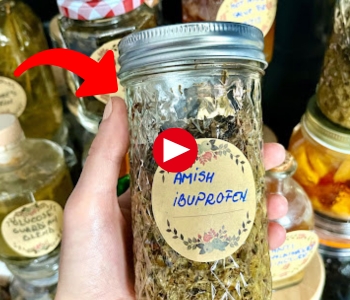 4 tablespoons turmeric powder (organic if possible)
4 tablespoons turmeric powder (organic if possible)- 2 teaspoons ground ginger (or 2 tablespoons freshly grated)
- 1 teaspoon ground cinnamon
- 1/4 teaspoon black pepper (helps activate curcumin in turmeric)
- 1/2 teaspoon ground cayenne pepper (optional, for extra circulation boost)
- 1/4 cup raw honey
- 1/4 cup apple cider vinegar (with the “mother”)
- 2 cups water
Why it Works
- Turmeric: Curcumin has strong anti-inflammatory and antioxidant properties.
- Ginger: Natural pain relief and digestive aid.
- Cinnamon: Improves circulation and helps regulate blood sugar.
- Black pepper: Increases curcumin absorption by up to 2000%.
- Cayenne: Stimulates blood flow and eases pain.
- Honey & vinegar: Anti-bacterial, soothing, and help balance body pH.
It can be used for general aches & inflammation, for sore throats or colds, but also for joint pain. Besides the ingredients, it is very important to know how to combine them. You can find all the necessary steps to produce Amish Ibuprofen, as well as many other natural remedies in The Amish Ways Book!

Know Your Limits—And When to Ask for Help
Even the best-trained combat medic can’t save everyone alone. The key to survival is knowing your limits. Practice first-aid regularly. Learn from EMT courses, military field manuals, and survival guides. Stock your kit with supplies, but more importantly, stock your brain with the knowledge to use them.
Related: Best Prepper Books
If you’re part of a survival group, make sure at least one person has deep medical knowledge. Train together. Run drills. In a real emergency, teamwork saves lives.
You don’t have to be a combat medic to save a life—but knowing what they know could save yours. When the world goes dark, and help isn’t coming, you’ll want to be the person others turn to—not the one waiting for a miracle. Learn now, practice often, and remember: in survival, knowledge is your best weapon.
In a crisis, infections, food poisoning, and respiratory illness can turn deadly fast. Learn natural, self-reliant protocols to handle these—plus remedies for 42 other conditions—from The Holistic Guide to Wellness.
You may also like:
Impossible SHTF Choices You Will Have To Make
Penicillin Soup: Ingredients, Step-By-Step Recipe (Video)

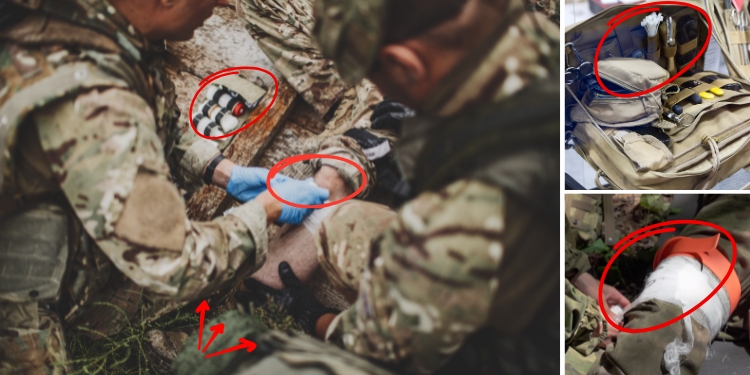







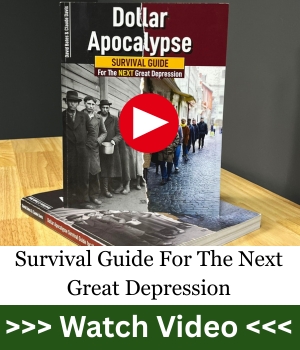


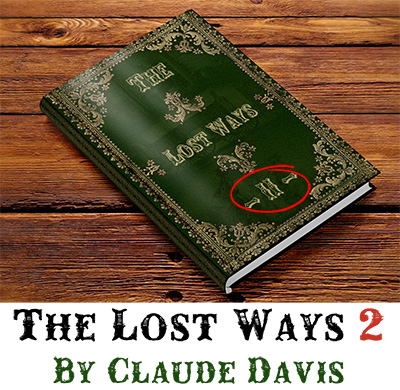



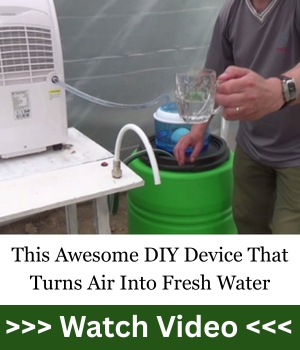





I got shot in the foot, the round cutting across the top of my foot and severing an artery. I made a field expedient pressure dressing of a heavy cotton sock (dirty) folded in thirds and secured with a dirty red bandanna, the knot on top of the sock to apply pressure. One thing and another it was four hours until I received medical care but the dressing stopped the arterial bleeding. When the Doc unwrapped it the blood jetted all over his smock in 3 foot spurts, pretty cool. Characters in books and movies are always getting flesh wounds that make neat little holes and don’t really bother them, I tell you what, the shock from that bullet turned my leg black, blue, green, and yellow all the way to my knee and I couldn’t walk w/o crutches for three weeks. In a bad SHTF even that little hurt would’ve been fatal.
That’s a powerful story, and exactly the kind of real-world experience most people don’t think about when they imagine a “simple” gunshot wound. What you described with the sock and bandanna is basically a pressure dressing, and the fact that it held for four hours until you got proper care is proof of how critical immediate action is.
You also hit on something most folks don’t realize—the shock, bruising, and long-term recovery are often far worse than what Hollywood shows. In a true collapse, without a doctor waiting at the end of the road, that kind of injury would indeed be fatal for many. Thanks for sharing!
i shot myself in the upper thigh when i was 6. a 22 pistol i had in a holster just went off.
in and out about 2 inches deep, never blead a drop, i guess that the heat caurterized the wound. dad carried me back down into town and stopped at a bait shop and bought some alcohol and iodine and patched me up in the bathroom. we never told momma, she would have banned us from going out shooting again if we had.
we and most people were different in the 60’s.
if one of us had died, our parents would have told us to walk it off.
Took a course at the local clinic called “Stop The Bleed” which reflected this article, had hands on with tourniquets, roll gauze and heavy dressings. The instructors were ER techs and a doctor with a lot of experience. They also had suggestions for a kit to assemble for home and/or auto. This article was a good refresher.
That’s excellent! You hit on the best possible prep anyone can make: real training. A lot of people read articles like this one, but nothing replaces hands-on practice with tourniquets, gauze, and pressure dressings under the supervision of trained medics.
“Stop The Bleed” is one of the most useful civilian courses out there. Having a kit in your car and at home is also a smart move.
Howdy from high in the desert swamp,
There will be a situation where the best you can do is the best you can do. This is not meant to be oh, just walk off and forget about it. That doesn’t happen. What you will need to do sometimes is let the person go. Which is where I came in as a Chaplain. There will be others who will need what supplies you have. The person may be a lost cause and bluntly, a waste of limited resources. Know your limits and live with it. You did what you could and sometimes even a trauma center isn’t enough. There will be or already are others who you can help. Carry on and do the best you can.
This is why I sign off: REMEMBER TO HAVE YOUR SOUL PREPARED.
That’s not a nice send off. It’s reality. You or the person wounded may be meeting the Savior shortly. This eternal event can be anytime, anywhere, not only in a zombie apocalypse or community uprising but just, going to the park.
REMEMBER THE ALAMO
REMEMBER 9/11
REMEMBER NORTH CAROLINA
REMEMBER TO HAVE YOUR SOUL PREPARED
That’s a hard truth, and one that preppers don’t always want to hear. Triage is about recognizing that sometimes you’ll lose one to save three.
Having someone like you who can tend to the spiritual and emotional side is just as important as the person applying the bandage.
In a collapse, there won’t just be physical wounds to deal with, but moral and spiritual ones too. As always, thank you for reminding us to prepare the soul as well as the body.
Well, having your soul prepared as Jesus, your Savior, is the number ONE in being prepared… not just when things get tough… but every day, always!
Blessings,
Hischild
Tourniquet Tip
1. Pre-make using triangular badges folded in a broad long strip. You’ll need at least 2 but three is better. The windlass is made from 2-3 tongue depressors taped together.
2. One badge is placed 2 inches above the wound between the heart and wound. The knot is tied above the badge once. Place the windlass on top of the knot. Tie the badge over the windlass in a square knot.
3. Tighten the windlass until the bleeding stops.
4. Secure the windlass with the remaining triangular badges.
We had to improvise because of the non-available supplies during the lean Bush years. Bush the Younger penalized the CAARNG for the elec college votes CA gave Gore.
Great breakdown of an improvised tourniquet method. The important takeaway here is that you don’t need fancy gear if you know the principles: wide material, a solid windlass, and enough tightening to stop the bleed.
Practicing ahead of time with improvised materials like you described is invaluable—because in a real emergency you might not have a CAT tourniquet in your pocket.
\and apply it directly to infected wounds as a poultice.\
Never do this! Neither with onions nor with garlic. You can put crushed garlic or onion in a jar and bring the opening to the wound
Good caution. That’s why the article starts with a disclaimer, because natural remedies like garlic can help in some ways, but also cause harm if misused.
Garlic has antimicrobial properties, but applied raw and left too long, it can burn tissue and damage skin.
Best bet is to rely on clean water, antiseptics, and sterile dressings first, and only use garlic carefully and with knowledge if you’ve got no other options.
Onions are even less reliable for wound care.
Thanks for the heads up, will edit the article to make it clearer.
Please do not use tampons! They are made to absorb blood. Not stop it. We were trained to put the TQ “high and tight “. A few inches above the wound would not stop the bleeding if the artery retracted itself up 6 inches.
You’re right that tampons weren’t designed for wound packing and don’t provide the same pressure or effect as gauze. Proper tourniquets and hemostatic dressings are always best.
That said, in a survival scenario where you’ve got nothing else, they can serve as a last-ditch option.
But if you’ve got time to prep, stock real supplies now—it’s one of the smartest investments you can make. Thanks for the comment, much appreciated!